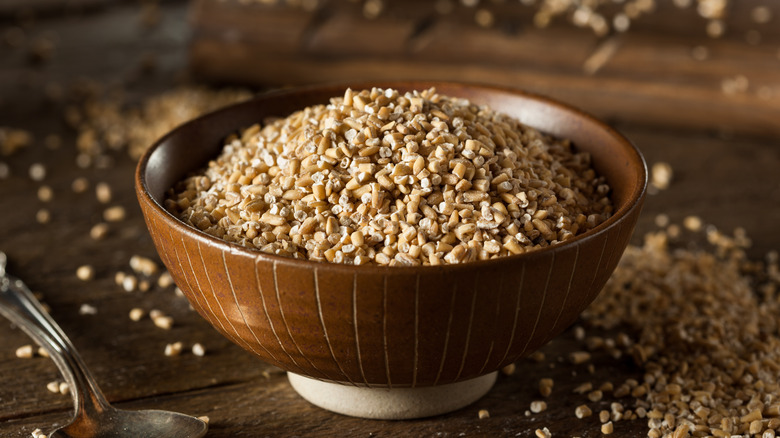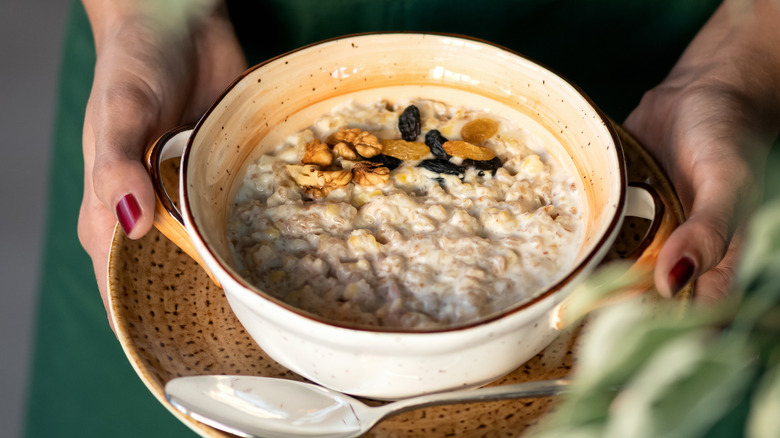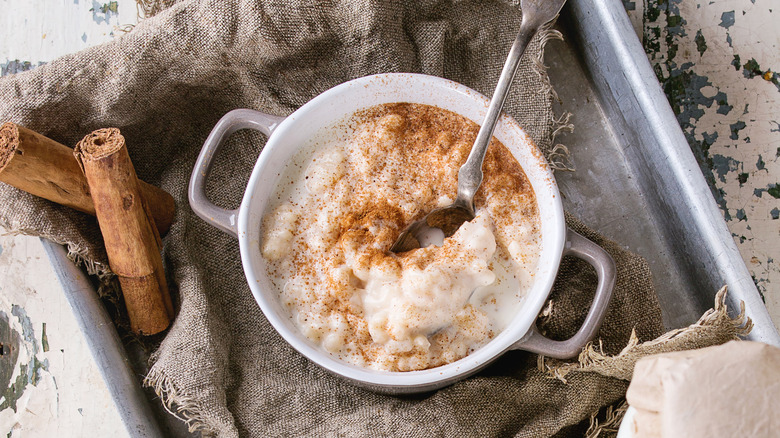Irish Vs. Scottish Oats: What's The Difference?
We love oats. We like to eat them, use them for skincare, and they are even gluten free, but what are oats exactly? According to Healthline, oats are cereal grains like wheat, rice, and corn. Grains are the small — often hard — seeds that grow on the top of tall grasses called cereals, hence the name cereal grain. Oats are chock full of antioxidants, fiber, and vitamins, making them a healthy indulgence. Some studies also indicate that people who eat whole grains may be less likely to develop type 2 diabetes, colorectal cancer, and heart disease (via National Library of Medicine).
Something to note before heading out to your local supermarket is the nutritional difference between types of oats. There are a lot of oat styles to choose from, and it can be overwhelming, but Healthline attests that whole grains have more fiber and minerals than refined grains. So when you are scanning dozens of boxes trying to find the one that will give your diet a little extra boost, look for Irish or Scottish oats as they are the two best options.
Irish oats (aka steel cut oats)
The difference between Irish oats and Scottish oats is simple: texture. Both are made from the same whole grain cereal, but how they are processed and sold to the public (and where these processes originated) is what really defines these two from one another.
Irish oats are rough in texture because the whole seed has been cut in half by large steel blades, and only the outer hull is removed from the seed. According to Simply Oatmeal, Irish oats are less processed than other oat styles, and this type of oats should not be eaten raw because they are not pasteurized through steam before being cut and sold. Therefore, they need to be cooked heartily before being eaten.
McCann's Irish Oats are one of the most popular and oldest steel-cut oat producers in the world, producing island-grown oats in Ireland for over 150 years, according to McCann's website. They are still making traditional steel-cut oats today.
Scottish oats
The oldest oats we've been able to trace back existed in Egypt around 2000 B.C. Although it is speculated that the Chinese were aware of the grain well before the Egyptians, they weren't a well-respected source of food. According to KRCU Public Radio, the Egyptians viewed them as we view dandelions today: as weeds. But after the oats made their way to Scotland, they became a beloved part of many peoples' diets.
Scotland seems to have found endless uses for oats. The sovereign state has an annual World Porridge Making Championship and oats are also an integral part of Scotland's national dish: haggis (via Heated Medium). Haggis is a pudding made of a sheep's liver, heart, and lungs, mixed with mutton and blended with oats and spices. It seems like the Scottish will eat oats no matter what they're in!
Scottish oats are made using whole oat groats that are steamed and rolled then crushed between millstones. A millstone is made up of two large stone wheels pressed together, one of these wheels rotates and grinds the oats smooth. Bob's Red Mill claims that if you were to turn these ground oats into a kind of oatmeal, it would turn out more like traditional porridge than oatmeal.


